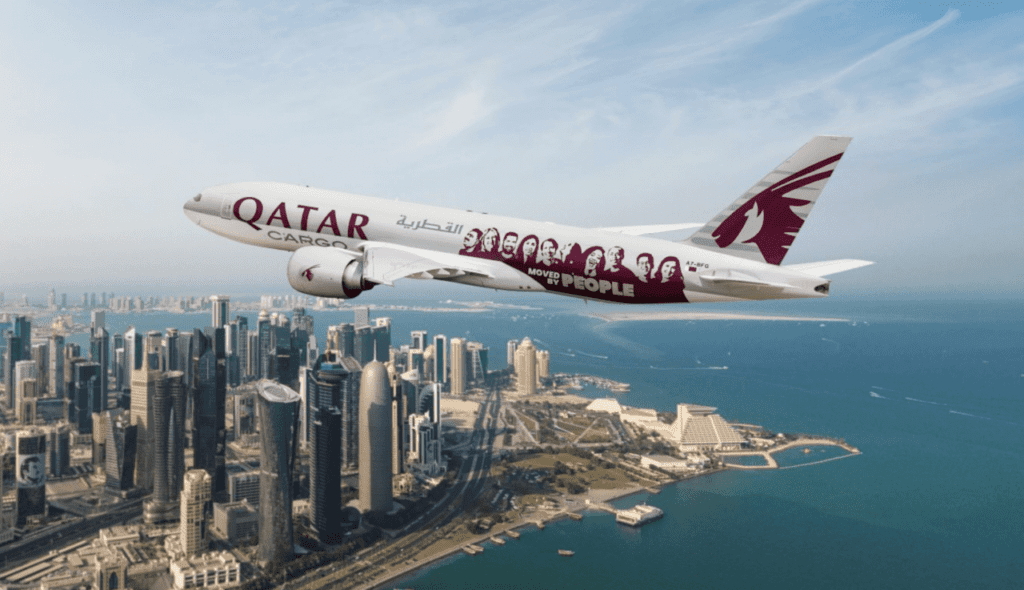Global Avionics Round-Up from Aircraft Value News (AVN)

(Photo: Qatar Airways Cargo)
As global cities grow into dense logistics ecosystems, the line between air travel, rail, sea, and road transportation continues to blur. This fusion is most visible at next-generation multimodal hubs, i.e. those high-capacity, high-tech centers where aircraft, autonomous trucks, urban rail, and even drones intersect.
However, seamless transfers between modes of transport don’t just happen on the ground. In the cockpit, too, avionics are being rethought for compatibility with an increasingly interconnected infrastructure.
Aircraft avionics are being adapted for a world where coordination between modes isn’t optional—it’s essential. That shift is pushing forward a new wave of standardization efforts. For lessors, appraisers, and operators, these changes bring opportunities to boost asset values and extend fleet relevance, but only for those ready to embrace the interface revolution.
Multimodal Hubs: A New Kind of Airport
Multimodal transportation hubs are being designed to do more than move people from point A to B. In cities like Singapore, Dubai, and Frankfurt, airports are becoming digitally integrated logistics centers. They coordinate aircraft arrivals with last-mile electric vehicle fleets, link rail freight to belly cargo in widebodies, and even manage drone deliveries from central control towers.
For aircraft avionics, this means new demands. Ground infrastructure now requires aircraft to transmit and receive far more data, and to do so in standardized formats that mesh with logistics software, real-time security systems, and intermodal scheduling platforms. The aircraft is no longer an isolated unit. It is a node in a massive digital grid.
The Role of Avionics in Intermodal Coordination
The traditional avionics stack, comprised of flight management systems, communication radios, and navigation units, was built primarily for air-to-ground and air-to-air functions. But modern hubs are now asking for something more: avionics that can interface with port systems, customs infrastructure, automated passenger flows, and ground mobility services.
Consider gate scheduling. Standardized avionics can relay exact arrival times, turnaround metrics, and even deplaning progress to airport systems. That helps optimize baggage transfers, coordinate connecting ground transport, and even improve passenger wayfinding inside terminals.
Cargo aircraft are an even bigger beneficiary. If avionics can align directly with warehouse and distribution software, ground crews can pre-stage cargo based on real-time aircraft telemetry and arrival precision. That speeds up cargo flow, improves slot usage, and reduces idle time, all while adding value to the aircraft providing that level of service.
Enter the Standardization Push
To support this vision, manufacturers and regulatory bodies are racing to define a new baseline for avionics interoperability. The goal is to create open or semi-open interfaces that allow aircraft to communicate fluidly with both airport systems and non-aviation digital ecosystems.
Organizations like ARINC and EUROCAE are leading efforts to write the standards for cross-platform data formats and avionics interfaces. Meanwhile, OEMs like Thales, Collins Aerospace, and Garmin are rolling out modular avionics suites built around common communication protocols.
The key is plug-and-play adaptability. Avionics must be able to integrate with whatever digital environment the airport or hub uses, whether it’s proprietary logistics software or standardized APIs driving urban mobility platforms.
What It Means for Aircraft Values
Aircraft that can interface with these digital hubs are becoming more valuable, especially for operators in high-density regions where airport time is precious and ground coordination is critical. For widebody freighters, standardized avionics capable of feeding directly into cargo management platforms have proven to boost utilization and cut ground time, translating into better margins and, in turn, higher lease rates.
Passenger aircraft also benefit. Narrowbodies servicing short-haul, high-frequency routes through smart airports can deliver better on-time performance if their avionics are interoperable with scheduling and gate management systems. That performance edge is now reflected in how appraisers model asset value, particularly in Asia and Europe where smart airport infrastructure is furthest along.
According to several aviation consultancy studies, aircraft with open-standard avionics interfaces see value uplifts of 2% to 4% compared to similarly aged peers with legacy closed-loop systems. In leasing markets, such aircraft command stronger demand and more favorable lease terms, especially with operators aiming to future-proof their fleets against tightening airport integration requirements.
The Retrofit Dilemma
Much like the 5G upgrade wave, standardizing avionics for multimodal compatibility often requires retrofits. While newer aircraft from Airbus and Boeing come increasingly equipped with interface-ready avionics, older jets lag behind. These legacy systems were never designed to communicate beyond the aircraft’s own internal network or the most basic ATC links.
For lessors, this creates a segmentation of the fleet. High-capability aircraft with open-standard avionics are easier to place and maintain value better. Older aircraft lacking that flexibility are starting to slip in value, particularly in leasing markets tied to smart airport corridors.
The retrofit process can be challenging. Updating avionics to support standardized interfaces may involve swapping out multiple LRUs (line replaceable units), adding new data buses, and re-certifying systems under strict avionics regulations. But some manufacturers are now offering retrofit kits with pre-certified, drop-in compatible modules aimed at streamlining this process and keeping older aircraft in play.
How Lease Language Is Changing
Lessors are beginning to include interface-related clauses in lease agreements. In addition to traditional performance metrics, contracts now sometimes reference “hub compatibility” or require tenants to maintain avionics configurations that remain interoperable with designated airports or logistics platforms.
There’s also an emerging market for “interface maintenance packages,” where MRO providers update aircraft software and data layers periodically to keep systems aligned with evolving hub standards. These packages are not just operationally helpful; they’re becoming a value retention tool for lessors and financiers.
This article originally appeared in Aircraft Value News.
John Persinos is the editor-in-chief of Aircraft Value News.